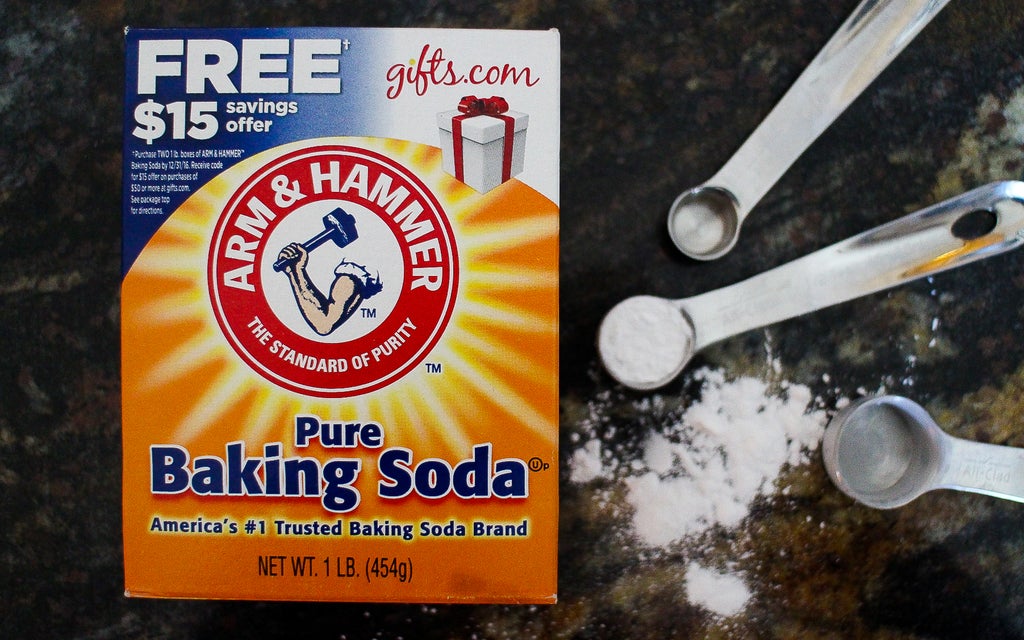Introduction: Leavening Agents
Leavening refers to any agent that makes dough or batter rise and expand. They create pockets of air or carbon dioxide that are held within the fat and other ingredients of a batter or dough. When exposed to high heat these pockets release steam and evaporate causing the ingredients to rise, leaving behind tiny holes in the baked good. Those small holes create the 'crumb' of a baked good.
In most cases, if leavening is left out of a recipe the final product will be very dense. Depending on what you are baking this could be good or bad. If you don't have leaving in a cake it will most likely not be well received, however, if you are making shortbread cookies no leavening is needed and the final cookie is still delicious with a great texture/crumb.
Leavening agents are divided into three main categories:
Chemical Leavening Agents - Examples of chemical leavening agents are baking soda and baking powder. Their function is to produce pockets of carbon dioxide that release during baking causing rise in a baked good. These are the most common forms of leavening in traditional baked goods.
Mechanical Leavening Agents - This form of leavening uses ingredients that are manipulated in some way to create air bubbles. Creaming fat and sugar, whipping egg whites, or whipping heavy cream are examples of this type of leavening.
Biological Leavening Agents - Fermentation is used to produce carbon dioxide in biological leavening agents. They include, yeast, kefir, sourdough starter, and beer. These are most often used in bread making but can be used in some baked goods as well.
Step 1: Baking Soda & Baking Powder
Baking Soda

Baking soda, also referred to as sodium bicarbonate or bicarbonate of soda, is made up of sodium ions and bicarbonate ions. It can be manufactured or naturally mined.
Recipes that contain baking soda must also contain an acid such as: vinegar, lemon juice, milk, cream of tartar, molasses, applesauce, cocoa powder (not Dutch-process), or brown sugar. When the acid and the baking soda (a base) are mixed you get the classic childhood volcano reaction of millions of carbon dioxide bubbles forming, foaming, and rising! The same basic idea happens in baked goods only those bubbles (or carbon dioxide) leave behind air pockets in the baked item making the texture light and airy.
Baking Powder

Baking powder consists of a few different ingredients: baking soda, an acid and a dried starch (or filler) of some kind. It acts and performs in the same way as baking soda but does not need an acid since it already contains cream of tartar, or other form of acid. When added to wet ingredients, baking powder will immediately start working to create carbon dioxide bubbles. When using baking powder you want to put your prepared batter or dough in the oven as quick as possible to get the most rise out of the immediate bubbles.

It is widely believed that baking soda and baking powder are interchangeable, however, this is not the case. You can use baking powder in place of baking soda (one to one) if you don't have it on hand. You can only use baking soda in place of baking powder if there is also an acid in the recipe.
In the photo above you can see that the baking soda on the right mixed with water does not product any air bubbles or fizzing. Since baking powder contains and acid and a base, carbon dioxide bubbles will form automatically when the powder is mixed with liquid (in the bowl on the left).
How to Make Baking Powder
You can make your own baking powder with a 2 to 1 ratio of cream of tartar and baking soda. In a small bowl, whisk 2 tablespoons of cream of tartar and 1 tablespoon of baking soda. Place the mixture into a fine mesh sieve and sift into another bowl. Do this three times to ensure the mixture is well combined. Use as much as the recipe calls for.
Step 2: Mechanical Leavening Agents

If you've ever made a batch of cookies you will know that the first thing you do in a typical cookie recipe is cream butter and sugar. The creaming action is producing its own leavening. We've already learned that granulated sugar is a crystal and crystals have sharp edges that cut into the butter during mixing. This (mechanical) action produces thousands of teeny tiny air bubbles within the mixture that will cause a slight rise during baking. In most cookie recipes there is also a chemical leavening agent that supports the rise.

Whipping egg whites to soft or stiff peaks is also a common form of mechanical leavening. When egg white are whisked or beaten at a very rapid pace air bubbles become trapped in the whites. As we know, these air bubbles create rise in baked goods. When this is done, it provides almost all the structure in a baked good. The same can be achieved when heavy cream is beaten.
Step 3: Up Next: Lesson 8 — How to Read a Recipe
It may sound strange to have to learn how to read a recipe, but there are some specifics that should always be noted before you start mixing and baking. Find out what they are!













